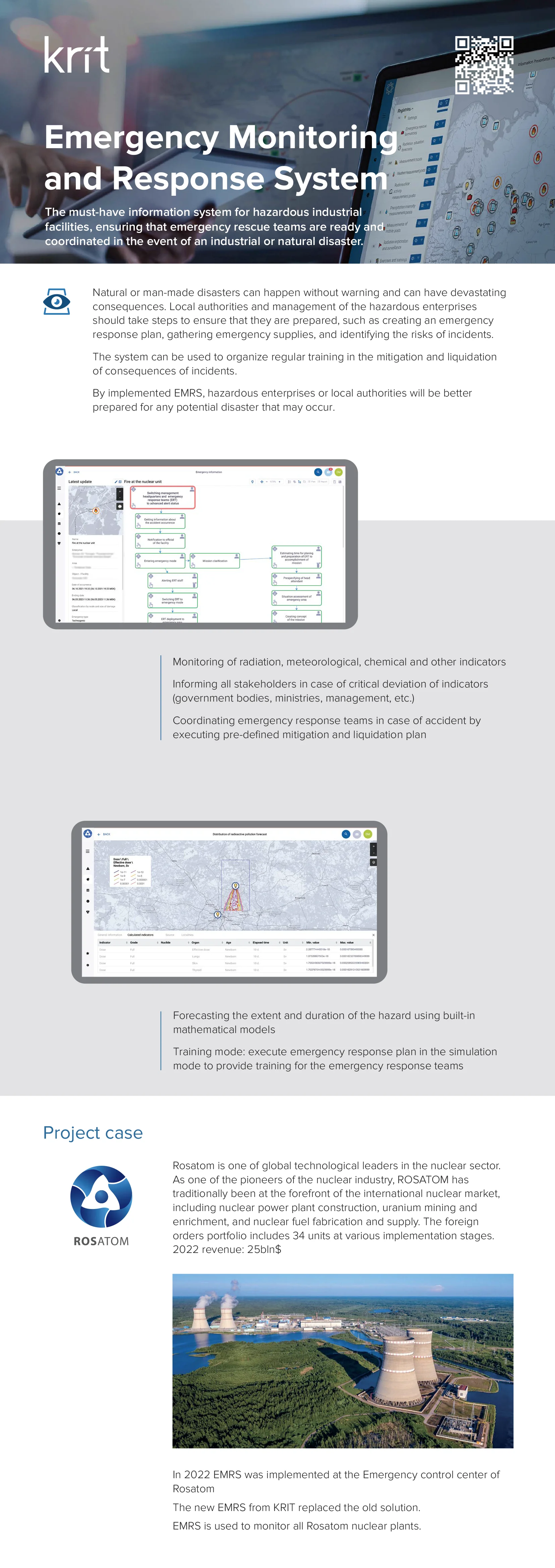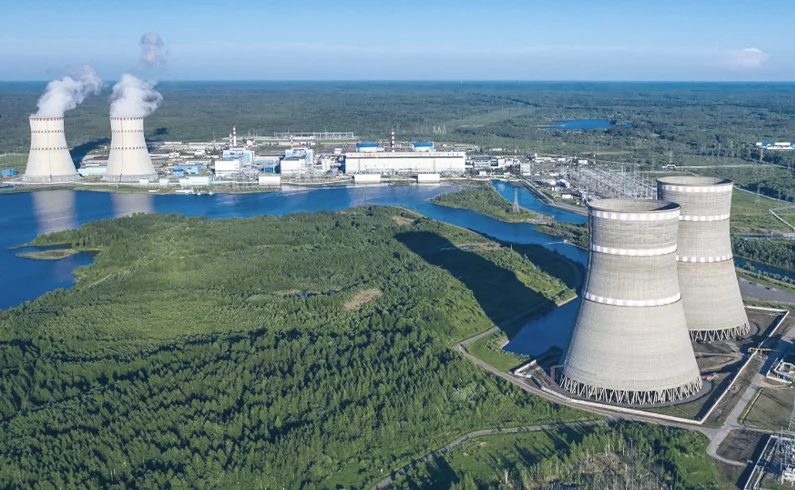Get a free presentation
Emergency Monitoring and Response System
The must-have information system for hazardous industrial facilities, ensuring that emergency rescue teams
are ready and coordinated in the event of natural or man-made disaster
are ready and coordinated in the event of natural or man-made disaster
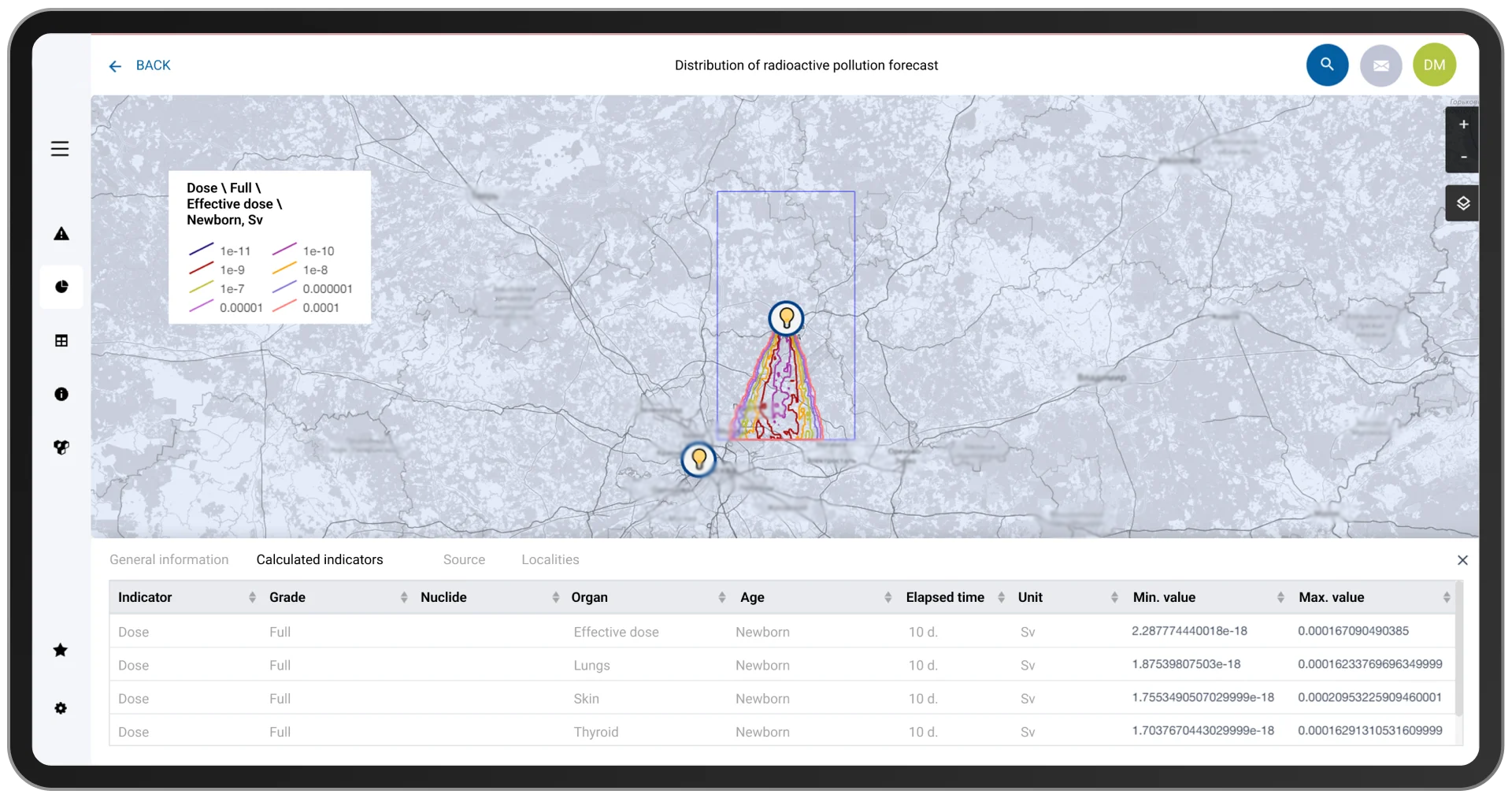
Natural or man-made disasters can happen without warning and can have devastating consequences. Local authorities and management of the hazardous enterprises should take steps to ensure that they are prepared, such as creating an emergency response plan, gathering emergency supplies, and identifying the risks of incidents
Emergency Monitoring and Response System (EMRS) can be used to organize regular training in the mitigation and liquidation of consequences of incidents
By implemented EMRS, hazardous enterprises or local authorities will be better prepared for any potential disaster that may occur
EMRS operation modes
Steady mode (normal operations)
- Collecting and analyzing information from external sources
- Maintaining action plan for different types emergency types
- Preparing regular reports to stakeholders
- Training planning and implementation
The steady mode of an EMRS refers to a state where the system is functioning normally without any emergency situation:
Emergency response mode
- Obtain all details regarding the incident in a timely manner
- Notify promptly and thoroughly all stakeholders to ensure effective communication
- Organize emergency response efforts as quickly as possible
- Effectively coordinate the work of the emergency response teams
The mode is triggered in the event of an emergency:
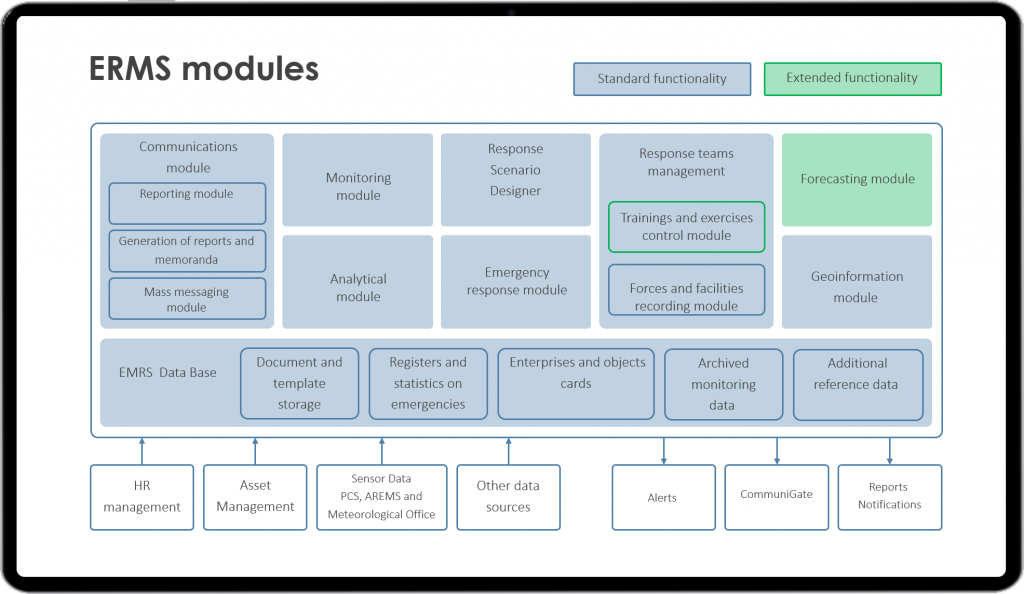
KRIT EMRS Modules
- Monitoring
- Communications
- Response Scenario Designer
- Response Team Management
- Trainings planning and implementation
- Forecasting and etc.
Capabilities
-
MonitoringMonitoring of radiation, meteorological, chemical, and other indicators
-
InformingInforming all stakeholders in case of critical deviation of indicators (government bodies, ministries, management, etc.)
-
CoordinatingCoordinating emergency response teams in case of accident by executing pre-defined mitigation and liquidation plan
-
ForecastingForecasting the extent and duration of the hazard using built-in mathematical models
-
Training modeTraining mode: execute emergency response plan in the simulation mode to provide training for the emergency response teams
Read the brochure
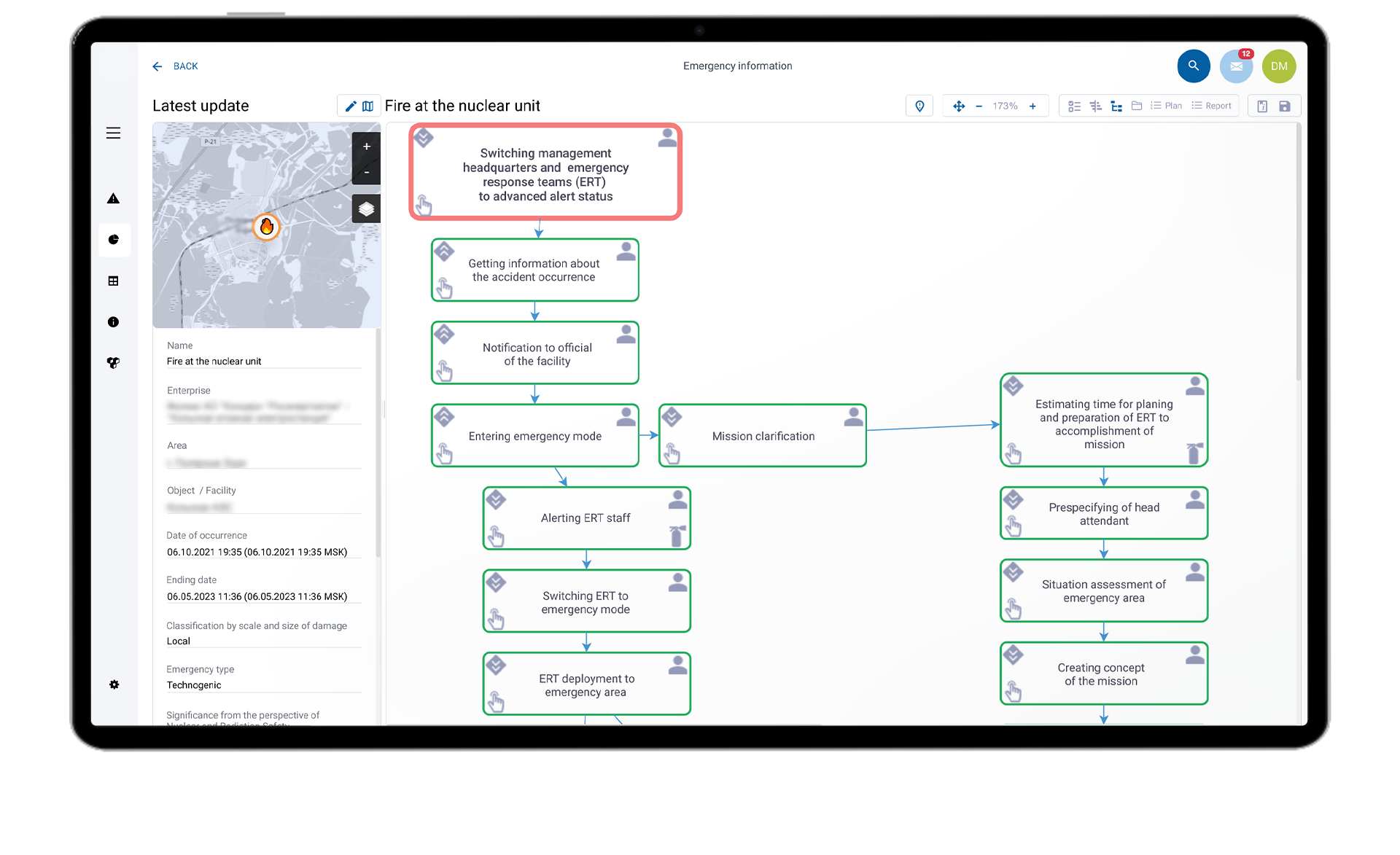
Next steps
Presentation
Request a personal online presentation of our EMRS solution
Questionnaire
Fill the questionnaire after the presentation. It will help us understand your existing processes and IT landscape
Proposal
Upon studying the questionnaire, we will send you a proposal for EMRS
Questions? Get in touch!
Request a demo
